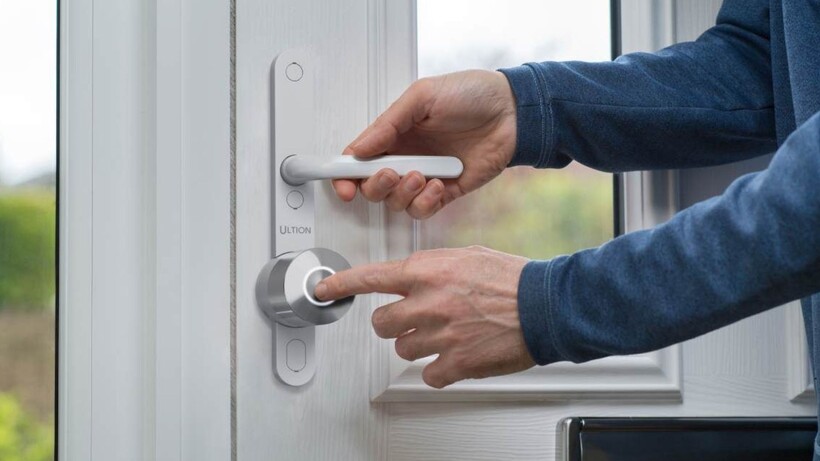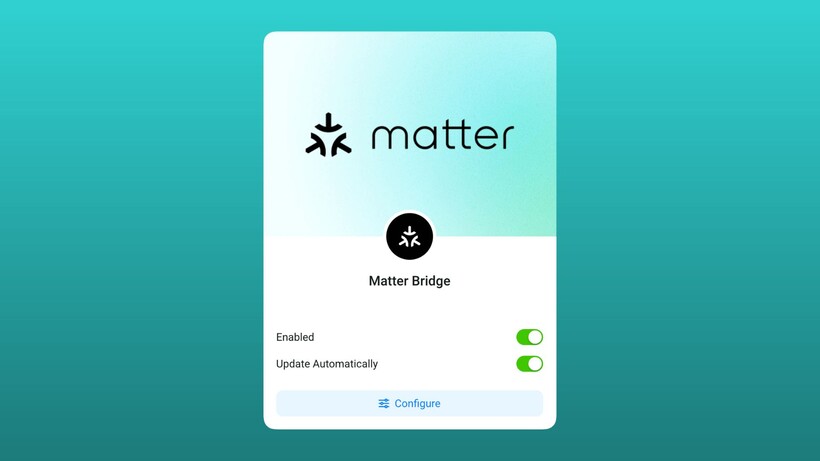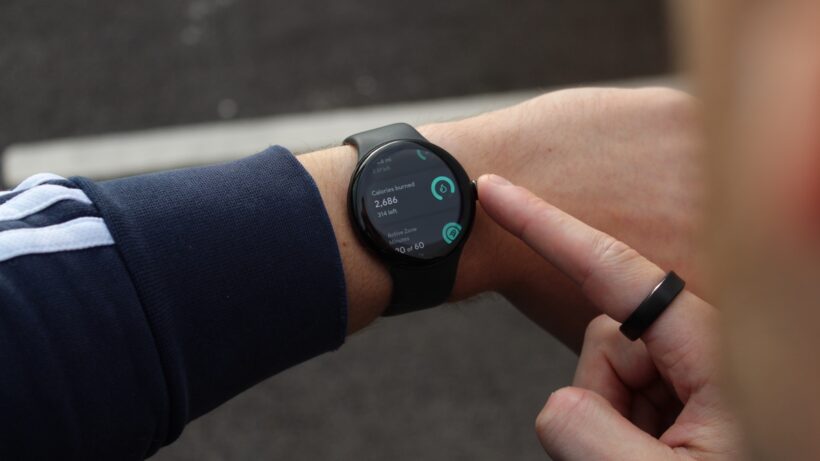
Tracking fitness and health doesn’t have to involve wearing a big screen on your wrist. With the rise of smart rings, screenless bands, and advanced hybrid smartwatches, you can now discreetly and accurately track your data.
Some may be put off by the dazzling displays on most modern smartwatches, while others may not be able to wear a watch for practical reasons. Whatever the case, there are excellent alternatives.
In 2025, most big brands offer a solid option to consider—Whoop, Garmin, Oura, and Amazfit all have subtle trackers at reasonable prices. And here at Wareable, we’ve tested the lot.
So, in this guide to the best alternatives to traditional smartwatches, we’ve compiled the top options from our in-depth reviews to help you monitor stats on the quiet.
Considerations when choosing a ‘hidden’ fitness tracker
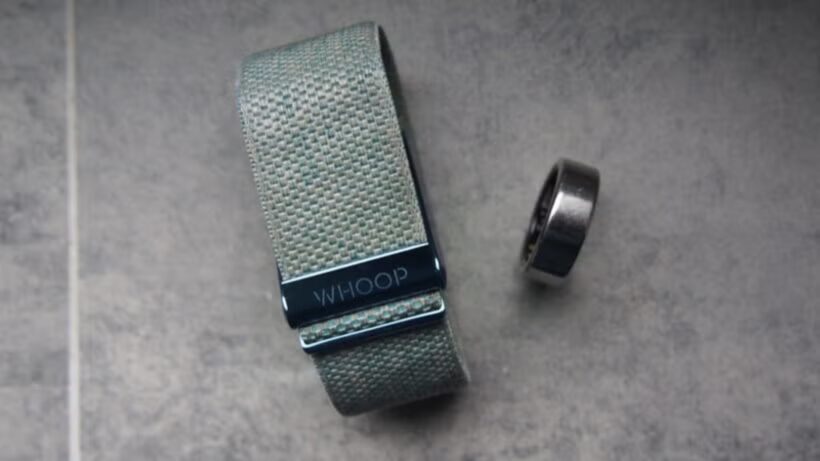
What style of ‘discreet’ fitness tracker do you want?
The ‘hidden tracker’ category has four main types, all with different trade-offs:
- Screenless bands: (e.g, Whoop, Amazfit Helio). These are fabric bands with a sensor pod. They are excellent for 24/7 data collection and can often be worn on the bicep for better heart rate accuracy during workouts. They are ‘data-first’ devices.
- Smart rings: (e.g, Oura, Ultrahuman). The most subtle option. These are brilliant for passive 24/7 tracking, especially sleep and temperature. However, they’re not great for workouts (due to potential scratching and less reliable HR readings).
- Hybrid watches: (e.g, Withings, Garmin Lily). These look like traditional analog watches but have hidden displays and sensors. This is the “hidden in plain sight” option, perfect for the office.
- Clip-on/pendant trackers: (e.g, Fitbit Inspire, Xiaomi Smart Band). These are the most versatile, as the sensor pod can be removed from a strap and placed in a clip or necklace.
The heart rate data trade-off
This is the most important compromise. If you wear a tracker as a pendant or clip-on (like the Xiaomi or Fitbit options), it is no longer in contact with your skin.
This means you will lose all advanced tracking. You will not get heart rate, heart rate variability (HRV), stress, SpO2, or advanced sleep stage data. It will essentially become a very simple step counter.
Battery life and the subscription model
By forgoing a power-intensive AMOLED display, most devices on our list have excellent battery life, ranging from five days to a full month.
However, be aware of the cost model. Premium trackers like Whoop and Oura require a mandatory monthly subscription to access your data and insights.
As a result, subscription-free alternatives like the Amazfit Helio Strap and Ultrahuman Ring Air are becoming increasingly popular.
In for testing: Polar Loop & Oura Ring 4 Ceramic

Though we’ve completed testing on the key devices refreshed in this category in 2025, a couple are still going through the wringer.
One is the Polar Loop (shown above)—an all-new, screenless, Whoop-style tracker that focuses on sleep, recovery, and strain. It syncs up with the rest of the Polar ecosystem, meaning those with an existing Polar watch can have this as their non-workout device for daytime downtime and sleep, and there’s no tacked-on monthly subscription. The initial outlay is relatively pricey though: $200/£249.
The other is Oura’s Ceramic Edition of the current Ring 4 lineup. This is essentially the same design in a hardier, more colorful (and less discreet) set of finishes. We’re keen to see how it holds up in the medium-term, as the standard Ring 4 finishes (like all smart rings) have a knack of picking up scratches from daily wear and tear.
Whoop 5.0/MG
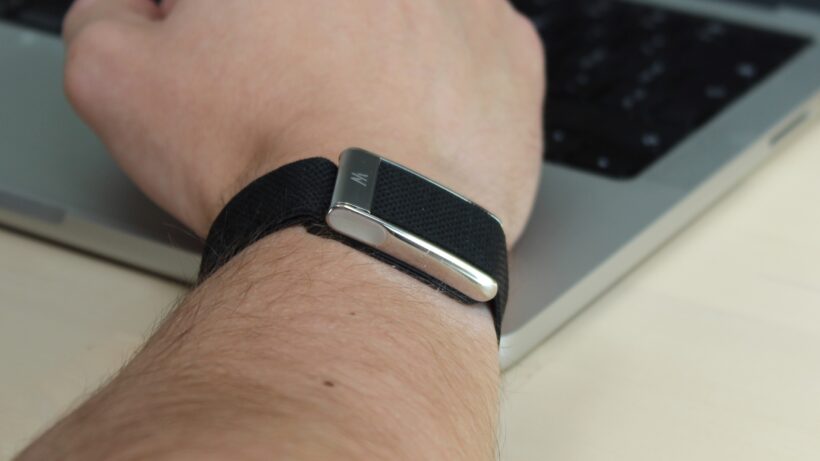
Whoop 5.0 in brief:
- ‘Whoop Body’ clothing enables discreet and versatile body placement
- Tacks stress, heart rate, respiratory rate, HRV, blood oxygen, and temperature,
- Requires a pricey subscription model
- Best for data-driven athletes focused on recovery
Discreet wearables tend to be light on metrics, but the opposite is true with the Whoop 5.0.
The 2025 release is the most advanced option on our list, collecting serious health stats like Healthspan and insights focused on recovery, strain, sleep, and stress. The Whoop subscription plan you choose when buying or upgrading dictates which device you get—5.0 or MG—and the latter can unlock ECG and blood pressure estimates (currently in beta).
Whoop’s screenless design makes it significantly more discreet than most when worn on the wrist, and Whoop Body clothing (which hides the tracker in garments) means its versatility is unmatched. This has been expanded for the 5.0 generation to include bralettes, vests, and more, though neither the 5.0 nor MG designs will work with bands designed for the 4.0—a real shame.
The recovery master—but for a price
We’ve worn Whoop daily as part of ongoing testing against other trackers over the past few years. The core wellness metrics, Stress Monitor and Health Monitor, are excellent and intuitive, and compare well in terms of accuracy with industry-leading wearables. As part of the 5.0 update, even the basics, such as step tracking, have been refined.
However, our main criticisms of Whoop remain its inconsistent HR readings during workouts and its high price. It works via a subscription rather than a one-and-done payment, making it one of the most expensive long-term wearables to invest in.
However, there’s nothing else quite like it, which is why it’s such a good fit for many.
- Check out our full Whoop 5.0 review
Oura Ring 4

Oura Ring 4 in brief: key specs and features
- The ring ensures hidden tracking, though it is relatively chunky
- Provides in-depth insights into stress, heart health, steps, sleep, and more
- Automatic workout tracking—but not the best form factor for tracking exercise
- Up to eight days of battery life
- Requires a monthly subscription fee
Smart rings have proven to be the most subtle wearable tech form factor over the last few years, and the Oura Ring 4 is the best you can buy right now.
We were a little disappointed that Oura didn’t slim down the design further in the Ring 4, but it is now more accurate, with more sensors that lead to virtually no gaps in tracking data. Oura also touts improved workout tracking accuracy for the Ring 4.
Yet, while we love the longitudinal insights into our cardio health, this still isn’t a tracker we recommend for workouts. Instead, the Oura Ring 4 excels as a holistic tracker. It delivers exceptional insights into stress triggers and resilience, engaging daily scores based on a wide range of biomarkers, and offers plenty of partnerships in health and fitness to flesh out its own data.
The sleep tracking is also particularly impressive, with data we grade as the best you can find on any wearable. It’s also much less obstructive to wear at night than a wrist gadget.
Like the Whoop 5.0/MG, the biggest downside is price, as you’ll need to pay for a pricey ring and commit to a subscription. Still, this is an excellent option if you want robust wellness metrics without using a wrist fitness tracker. Plus, the Oura Ring 3 remains a solid pick for those on a budget.
- Read our full Oura Ring 4 review
Amazfit Helio Strap
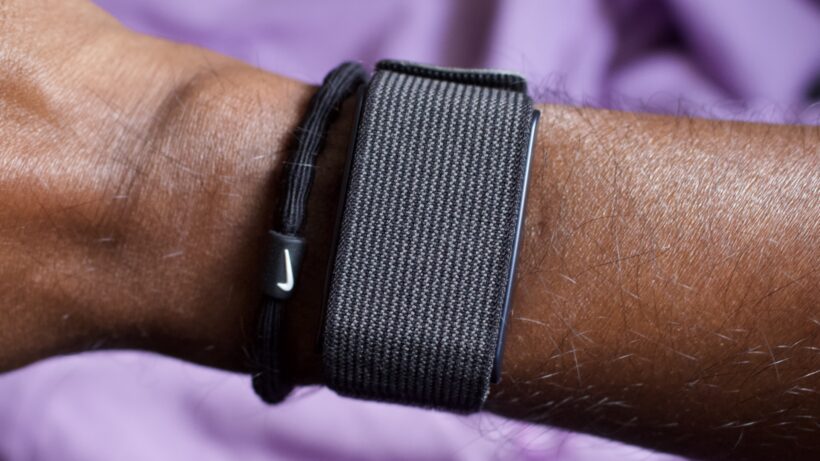
Amazfit Helio Strap in brief:
- A subscription-free Whoop alternative
- Can be worn on the wrist or (optional) arm strap
- Offers accurate heart rate tracking when worn on the upper arm
- Best as a powerful, low-cost, subscription-free alternative to Whoop
The Amazfit Helio Strap delivers on its promise as a compelling, subscription-free alternative to Whoop.
The hardware is lightweight (just 20g), comfortable, and has a 10-day battery life. Its core heart rate and sleep tracking are impressively accurate—particularly when the sensor is worn on the optional upper-arm strap.
In our testing, the arm-worn sensor was nearly identical to a Garmin chest strap (within 1-2 BPM), making it a reliable training tool.
The tracker feeds data into the Zepp app, which provides useful training features like VO2 max, recovery time, and a ‘BioCharge’ energy metric (similar to Garmin’s ‘Body Battery’).
It’s let down by unreliable automatic workout detection and a Zepp Health app that can feel cluttered, but these are forgivable quirks. For anyone looking for a screenless, data-driven experience at a one-off price of just $99/£99, the Helio Strap is an easy recommendation.
- Check out our full Amazfit Helio Strap review
Xiaomi Smart Band 10
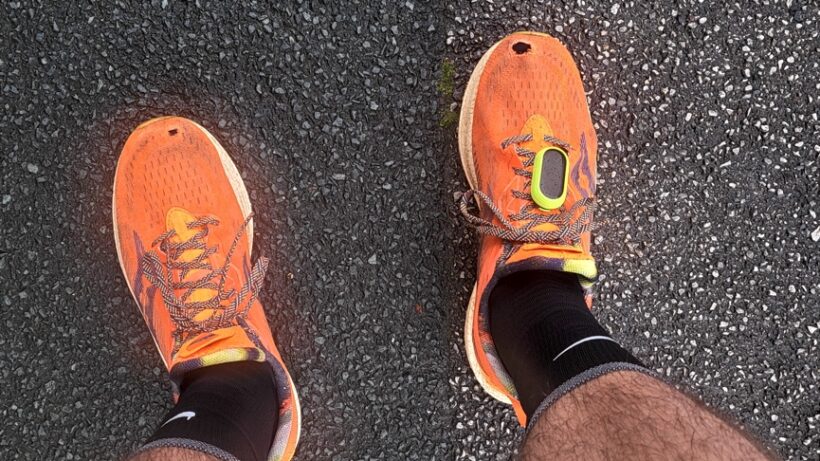
Xiaomi Smart Band 10 in brief:
- ‘Pebble Mode’ and accessories enable wear on a shoe, wrist, or as a necklace
- 16-day battery life (seven days with AOD enabled in our testing)
- 1.62-inch AMOLED display
- 5ATM water rating and IP68 water resistance
- Tracks workouts, heart rate, stress, steps, and health metrics
- Best for: Unbeatable value and versatility
The Xiaomi Smart Band 10 retains its unique alternative wearing options thanks to its ‘Pebble Mode’.
This allows you to remove the sensor pod from its strap and place it in different accessories. You can wear the Smart Band 10 on your shoelaces to get running form metrics like cadence and strike pattern, or as a necklace pendant for discreet, all-day step counting.
This versatility is its key strength, but it comes with a significant trade-off. When worn as a pendant or the sold-separately shoe clip, it is no longer in contact with your skin.
This means you will lose all advanced tracking, and data such as heart rate, stress, and SpO2 monitoring are off-limits until you put it back on your wrist.
When on-wrist, it’s a fantastic basic tracker with a bright screen and incredible battery life for its low price. The data isn’t as accurate as a Fitbit, but its value is unmatched.
Ultrahuman Ring Air
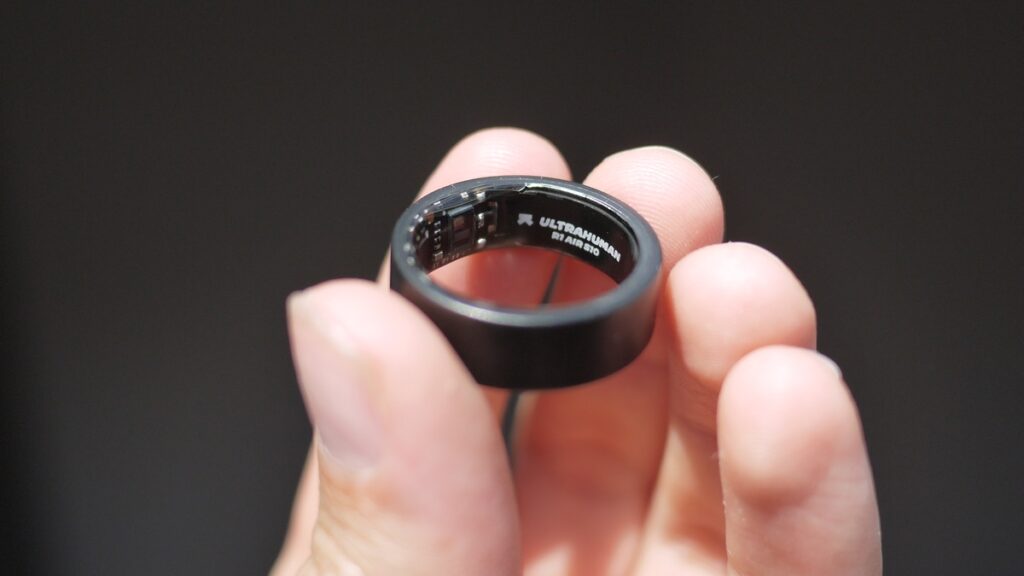
Ultrahuman Ring Air in brief
- Lightweight titanium ring focuses on sleep, circadian rhythm, and overall wellness
- Tracks sleep, recovery, HRV, resting heart rate, skin temperature, and activity
- Provides limited workout tracking; heart rate data not ideal for exercise
- Battery life is around five days
- Best as a subscription-free Oura alternative for passive tracking
If the Oura Ring piqued your interest, but its ongoing subscription cost gave you pause, consider the Ultrahuman Ring Air.
This is a lightweight and comfortable smart ring, weighing only 2.4g. The feature set is very similar to Oura’s. Sleep is the primary focus, and a ‘Sleep Index’ considers a wide range of data and metrics. We found the sleep tracking largely reliable, with accuracy comparable to its smart ring rival and Whoop.
It also focuses on recovery and helps manage circadian rhythms, including regulating stimulants and encouraging healthy wind-down times. Priced at $349/£280 without ongoing subscriptions, it presents a cost-effective alternative.
However, be cautioned: Like all smart rings, it’s not a great device for tracking active workouts, as it’s prone to scratches and HR inaccuracy during exercise.
- Check out our full Ultrahuman Ring Air review
Withings ScanWatch 2
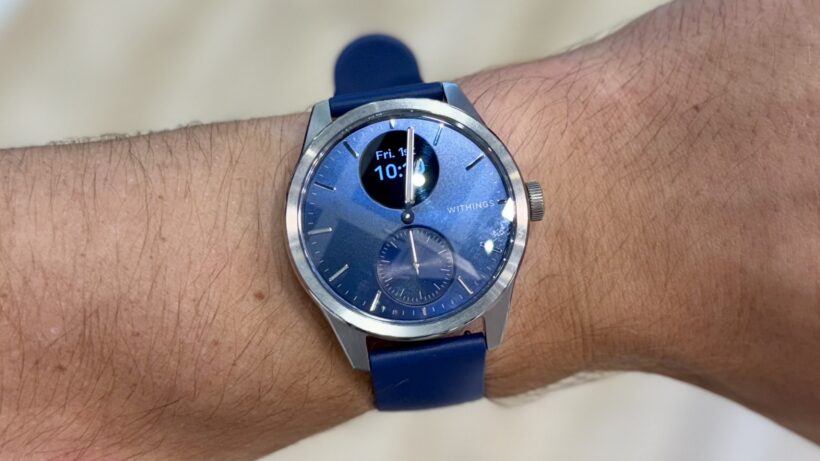
Withings ScanWatch 2 in brief
- Classic-styled hybrid watch with a grayscale display dial
- Tracks heart rate, ECG, SpO2, sleep, activity, and temperature trends
- Provides improved heart rate accuracy from the original ScanWatch
- No built-in GPS for outdoor exercise
- Up to 35 days of battery life
The Withings ScanWatch 2 is the best hybrid for deep health tracking—and a 2025 update makes it an even more compelling pick. The changes haven’t affected the look; thankfully, this is still a premium analog watch that features a small monochrome screen for stats and notifications.
Instead, it now offers an exceptional 35 days between charges (up from 30 on older versions of the ScanWatch 2) and can power Withings’ AI-driven ‘HealthSense 4 OS’. This updated software crunches data from 35 biomarkers to power a new ‘Vitality Indicator’ that aims to give you a clearer picture of how fatigued you are and why.
It also introduces predictive health alerts that notify you of potential illness or the start of your menstrual cycle. Add all that to the existing features for medical-grade ECG for Afib detection and SpO2 for breathing disturbances during sleep, and it becomes a fairly formidable package.
So, for those who want robust, discreet health monitoring without sacrificing style, this is the top choice. The cheaper ScanWatch Light is also available, which removes the ECG, SpO2, and temperature sensors for a more basic tracking experience.
- Check out our full Withings ScanWatch 2 review
Fitbit Inspire 3

Fitbit Inspire 3 in brief
- It can be worn on the wrist or clipped onto clothing via an official accessory
- Works with Android and iOS
- Up to 10 days of battery life
- Tracks sleep, steps, calorie burn, workouts, and basic health metrics
- Doesn’t have built-in GPS, but can harness a phone for distance tracking
The Inspire 3 is a classic fitness tracker primarily worn on the wrist, but you can purchase an extra accessory to clip it to clothing. The clip enables you to secure the Inspire 3 to the waistband of your trousers, a belt, or a bra.
However, just like Xiaomi, be aware of the trade-off. There is no heart rate data when clipped, so you’ll forgo in-depth features such as the Health Dashboard, ‘Active Zone Minutes’, and advanced sleep metrics.
You’ll still get access to basic features, including inactivity alerts and phone notifications. The Inspire 3 offers Fitbit’s best battery life, with 10 days achievable between charges.
It costs a little more than the Smart Band 10, but the excellent, motivating Fitbit app makes it worth the extra cost.
A final thing to keep in mind is that this device is now getting pretty old, and is a good candidate to be replaced by a newer tracker in 2026.
- Check out our full Fitbit Inspire 3 review
Garmin Lily 2
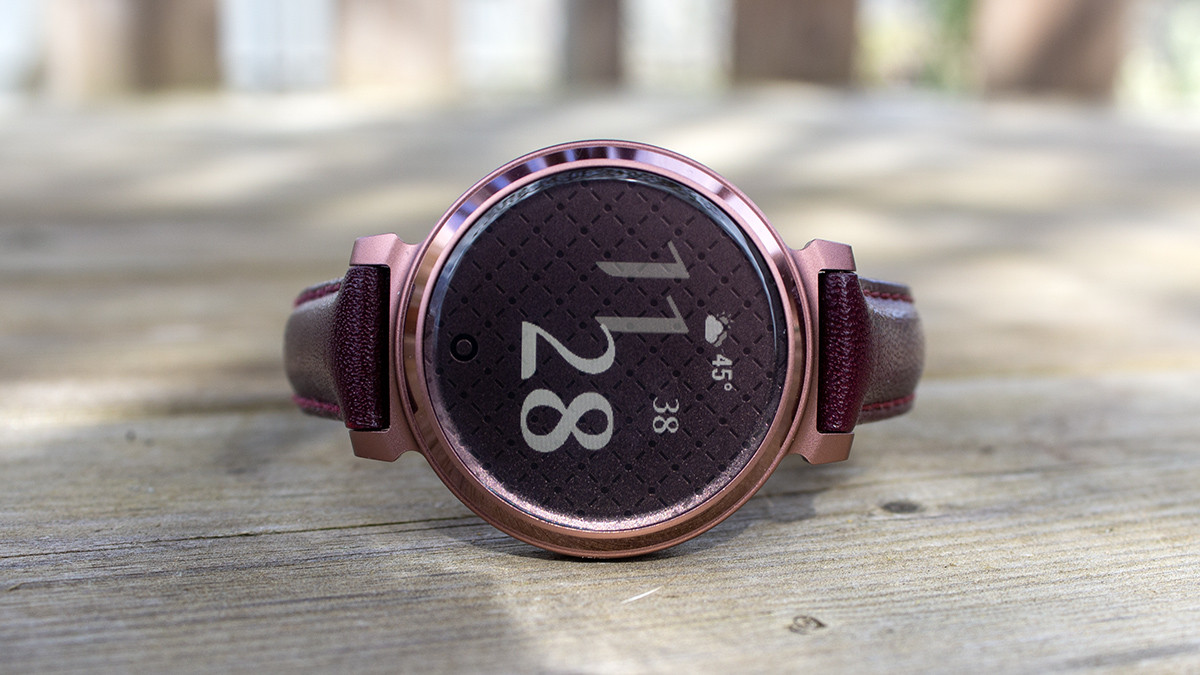
Garmin Lily 2 in brief
- Small hybrid for women with a focus on fashion and health tracking
- Offers sleep monitoring, cycle info, and activity tracking
- Provides smart notifications and is compatible with iOS and Android
- Features a patterned, low-res monochrome display
- Battery life of up to five days
For those who want their tracking wrapped in a stylish, jewelry-like package, the Garmin Lily 2 delivers. This 34mm watch suits smaller wrists and blends into everyday wear, making it one of the most discreet options available. It’s probably not strictly a hybrid, but it fits this section and guide well.
It excels in the basics—step counting, heart rate tracking, stress monitoring, and Garmin’s useful Body Battery feature—but lacks more advanced features like built-in GPS, so runners and cyclists will need to stay connected to their phones for accurate distance tracking.
Sleep and women’s health tracking are also included. They don’t quite match the depth found in Garmin’s higher-end models, but we think it’s still more than enough for those looking for a device with hidden smarts. They will be mostly hidden, as the patterned monochrome display hides stylishly when inactive. It isn’t the most vibrant or responsive compared to full-fledged watches, but it’s perfect for blending in.
If you want a fitness tracker that looks like jewelry first and a smartwatch second, this is one of the best options in 2025. In late 2024, Garmin also released the Lily Active 2, featuring improved battery life (nine days estimated, up from 5), GPS, and two new side buttons. It’s a great alternative if you still want that clever hidden display tech.
- Check out our full Garmin Lily 2 review

